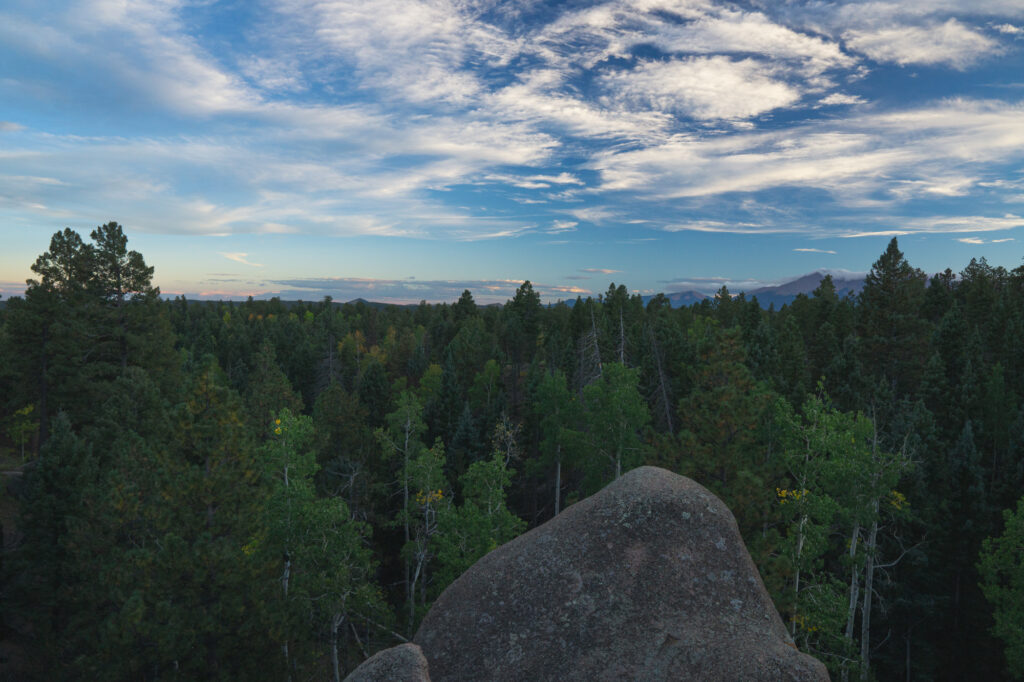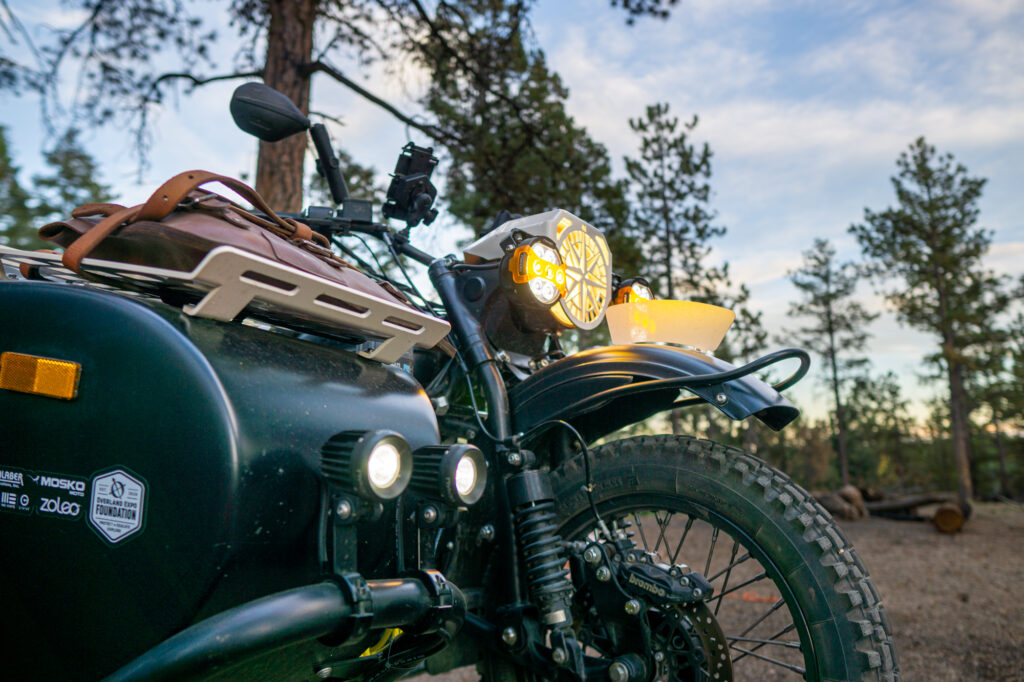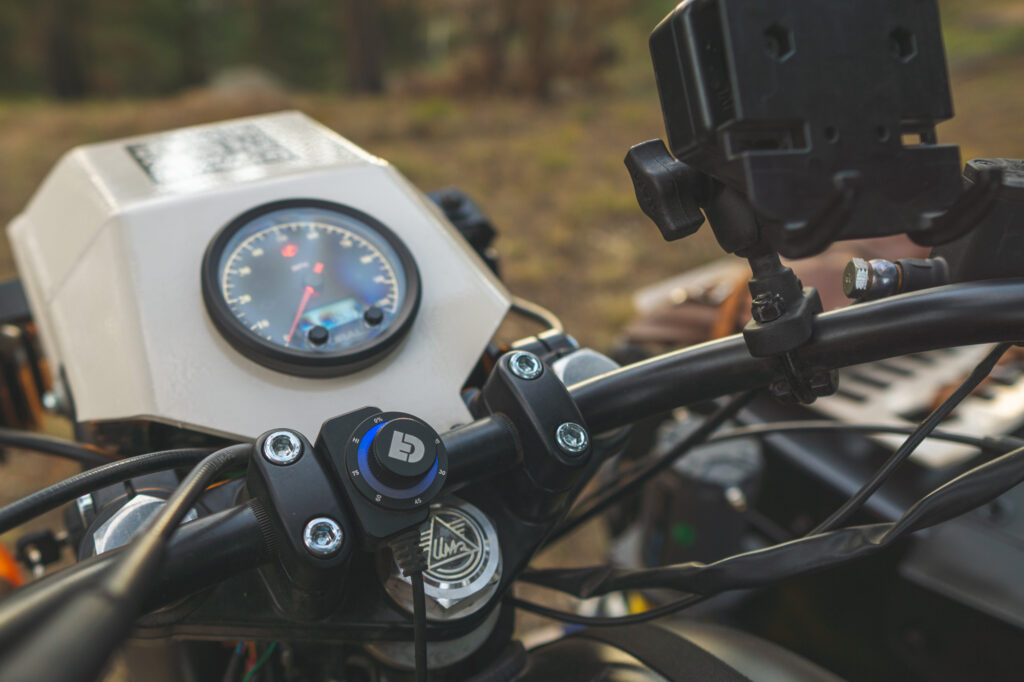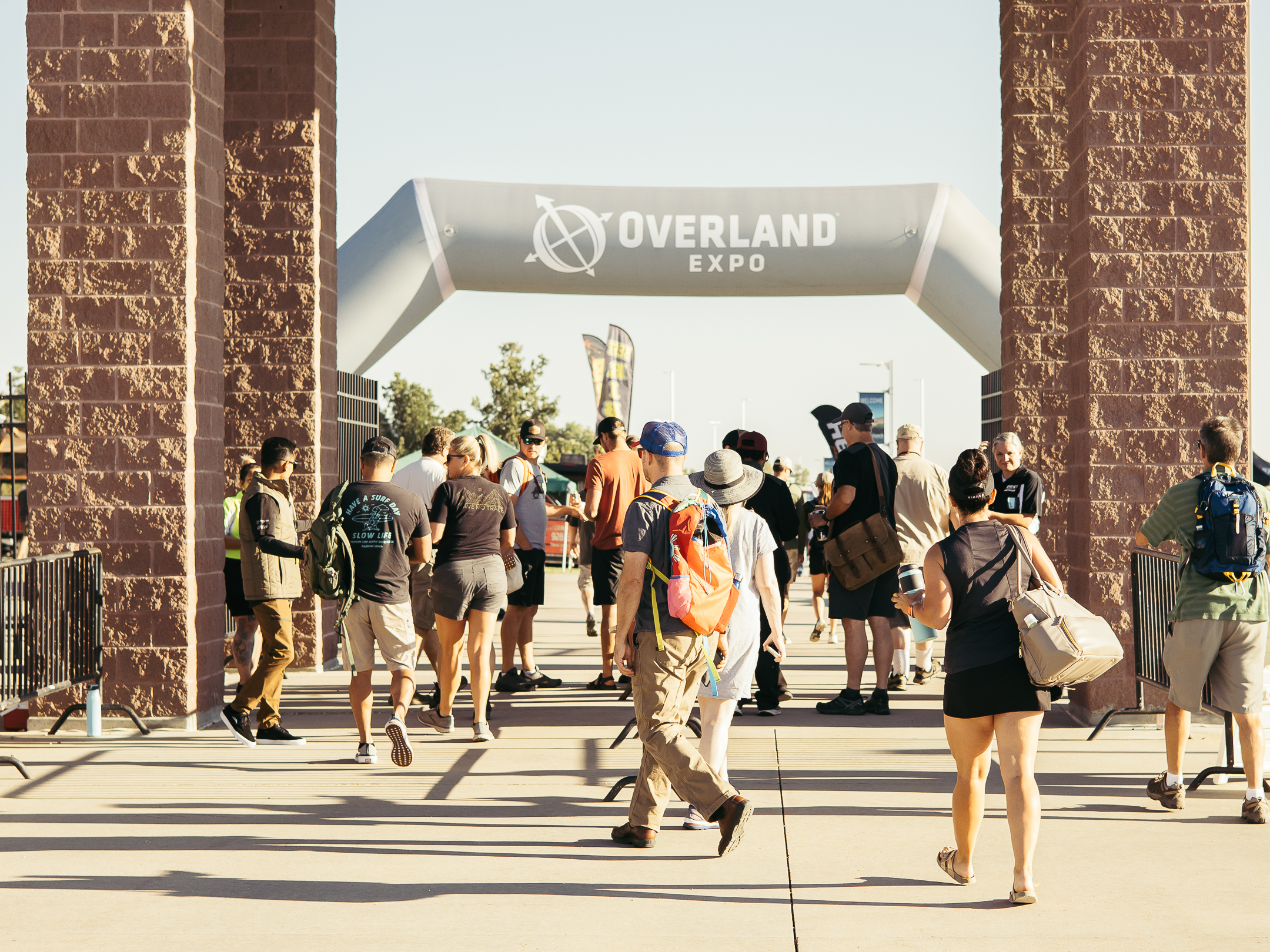Editor’s Note: We couldn’t be more excited for former staff member Zach Elseman to have some time with the 2024 Ultimate Overland Motorcycle. Zach is an experienced overlander who now calls Colorado home.
The boom of the adventure motorcycle industry, much like the growing popularity of overland travel as a whole, can arguably be attributed to a massive shift from vehicles previously used for continent-crossing expeditions, now being outfitted for short-term adventures that might last a weekend or even a single night in the woods. Most of my overlanding trips have been longer-term and have included a border crossing. When I was handed the keys to the Overland Expo Foundation Ultimate Motorcycle- a 2024 Ural Gear Up-I wanted to try exploring my own backyard in the front range of the Rocky Mountains near Colorado Springs, CO, with a simple kit on perhaps the most mechanically uncomplicated motorcycle on the market today.

When you get behind the handlebars of a Ural Motorcycle, you join a class of adventurers that have used this obscure and historic motorcycle to travel and explore places that no one would ever think to take an underpowered motorcycle with a sidecar. Travelers have been taking Ural motorcycles on round-the-world expeditions since the company was founded between the Ural Mountains and Siberia in 1941. Modern-day manufacturing happens in Kazakhstan but maintains the ethos of the original Ural, along with a few modern updates. The 749cc engine is now fuel-injected and pumps out a whopping 41 horsepower. Don’t be in a hurry to get anywhere, as the real-world top speed is around 62 miles per hour.
I loaded up the Ural with a minimalist camping setup consisting of a tarp, a sleeping bag, some dry food, and the minimal tools that come standard on the Ural Gear Up Standard. The plan was to hop on dirt roads west of The Springs and explore, with no real destination in mind. The Pike National Forest comprises 1.1 million acres and was named after the first explorer of the region, Zebulon Pike. Much of the forest is accessible via roads that meander through pine forests, groves of quaking aspens, and 300-million-year-old sandstone formations.
I filled up the fuel tank and hit the road. The going was slow as I weaved through traffic, climbing up from where the plains meet the Rocky Mountains at the base of Pike’s Peak. I traversed curvy mountain roads and weaved through canyons on state highways before seeing the exit for the National Forest, crossing into public lands after only riding for thirty minutes.
READ MORE: A Colorado Overland Adventure with the Ultimate Overland Vehicle
Adventure is Closer Than You Think

I live in a city of approximately 500,000 people complete with interstate traffic, bustling streets, and few places to find true quiet during the week. But only a few miles outside of city limits is access to thousands of acres of public lands, bisected by countless trails and dirt roads.
As I pin the throttle on the Ural to climb a gentle rise, I am aware of how fortunate I am to live in part of the country where public land is close by and accessible. It hasn’t always been this way for me. Like many others, I was drawn to the mountains of Colorado from a much less appealing part of the United States. While the lack of nearby public land didn’t keep me from exploring local forests when I lived in the American South, the access to wild spaces in the Mountain West is simply unmatched.
If you are the type of person to think, “There is nothing cool to see around where I live,” you are not alone. I used to think the same thing when I would sit at my office desk and ponder what it must be like to go out your back door into the mountains or desert. These thoughts hamstrung me into not taking trips at all because everything cool was in Colorado or Montana, or Baja. I challenge you to decide how far you are willing to drive or ride for a trip and draw a circle on your map with that distance as the radius of your circle. Now inspect your map. Have you visited everything in that circle? For me at least, within my circle were hundreds of towns, lakes, campgrounds, and attractions that I had heard of but never seen. I began visiting backwoods towns, following roads that barely showed up on maps, and camping in some of the best camping experiences I have ever had.
If You Wait for the Perfect Trip, You Might Never Leave
I round a bend and catch a view of a scarred landscape up ahead from a fire that ran through this area some fifteen years ago. Trees have begun to creep up, and while most of the homes in this valley were destroyed by fire, new cabins have been built, and lives are beginning to get back to normal. Forest fire damage always reminds me that you never know what tomorrow might bring. In a matter of hours, the residents of this quiet corner of Colorado were evacuated, and their homes were burned to the ground.

Throughout my travels, I have spoken to many travelers, and one regret sticks out of conversations time and time again: “I wish I had prioritized travel sooner.” For some people, that might mean saving up to take a year off for the Pan American Highway, but for others, it might mean cooking a steak dinner over an open fire instead of going out to eat once or twice a month. If the idea of getting out and exploring the world around you is a priority, make it a priority every chance you get, even if only for a couple of nights.
My first campsite is plain and uneventful, perfect for a night to relax around camp after a taxing day of exploring on a truly wild motorcycle. The Ural requires all of your focus and arm strength, and a day of riding feels like several on more conventional bikes. I crack open a warm beverage, heat up some food, and drift off to sleep.
Enjoy the Small Things

I only had one goal for the second day of navigating the two-track and logging roads close to my home, a campsite with a view of Pike’s Peak. The mountain looms over us every day and is a constant reminder that trails, campsites, and mountain lakes are so very close. Towering nearly 8,000 feet above the city, it truly is a site to see, and it becomes more impressive the closer you get.
The Ural is at home on gravel forest roads where the maximum speed of most traffic is under thirty miles per hour. Because my goal for the day is so simple, I can take time to explore side tracks and investigate potential campsites. I found a few campsites that needed a quick trash pick up, several that were contenders, and I might have found the limit for how steep of a trail the Ural could climb before bogging out.
On one of my many off-shoot trail meanderings, I came upon a trail that I wasn’t sure about. I scouted the trail and walked to the top, which was very steep. If I were in my four-wheel-drive, I would be engaging low-range four-wheel-drive and crawling up, hoping not to lose traction. In the Ural, the approach is similar. I engaged two-wheel-drive and shifted into the ultra-low first gear. I feathered the clutch and while the Ural surprised me with how far it climbed, the Ural and I were no where near the top of this near-thrity foot tall wall of two-track. I began to release the front and rear brakes simultaneously, as one would do when riding a conventional motorcycle. The Ural slid violently toward the sidecar wheel, which was now caught in the rut that was underneath me. The frame of the sidecar now holding the sidecar wheel just high enough off the trail so that my two-wheel-drive moto was now one-wheel-drive once more. The entire motorcycle was now precariously suspended on a rut some twenty feet up a thirty-foot hill climb.
In previous motorcycle riding classes, I had been taught to make the rut my road, meaning that a motorcycle was much more predictable in the bottom of a rut than it was while sliding from the middle of a rut into the hole. This advice has served me well until now. After several bouts of trying forward and the reverse gear on the Ural, I realized that was futile. As I sat on the seat, contemplating my options with the parking brake engaged, I saw the winch mounted on the front of the Ural, in between the front tire and the sidecar. I didn’t want to winch to the top as I wasn’t comfortable with how I would get back down, and I felt much better about lowering the Ural down backward, using the winch rope as an anchor. I freespooled the Superwinch and attached the rope to an uphill tree. The bike was at least secure as I worked to wiggle the back end loose.

Photo by Zach Elseman

Photo by Zach Elseman

Photo by Zach Elseman

Photo by Zach Elseman
While heavy, the Ural is still a motorcycle and the rear tire was easy enough to slide toward the rut while letting out some winch line a little at a time. My plan was working, and the bike began to right itself to its previous posture. This was fun. I was in the middle of nowhere with someone else’s brand-new bike, and I was having the time of my life figuring out a recovery problem that could send this shiny sidecar motorcycle rolling down a mountain. The extra tire from the sidecar only made the equation slightly more complicated. I lowered the motorcycle until able to reverse it against the nearby grade, unhook the winch, and glide it in forward down the track. I was free, exhausted, and smiling from ear to ear. I find that sometimes overlanders gravitate toward all of the gadgets and ultra-capable rigs and forget the fun of getting stuck. The simple act of encountering an obstacle and getting out in mostly one piece was exhilirating.
Find a Quiet Place
With sweat dripping and the sun beginning to drop in the sky, my search for a picturesque campsite was still underway. I rounded turn after turn, rewarded with numerous groves of aspens just beginning to change and countless deer jumping across the trail. I began to catch glimpes of America’s Mountain through gaps in the trees and I knew a site was close. The road began to climb, becoming more exposed with each switchback and then there it was. What looked like a logging clearcut from fifty years ago was now an idyllic clearing with a fire ring, a beautiful rock formation to explore, and a distant view of Pike’s Peak between the groves of changing trees.

Beyond the sound of the steady wind, this campsite was completely quiet. No sounds of cars or passing planes, simply nature and all of her noises. The aspens creaked and quaked with each burst of wind and distant coyotes became more and more exuberant with their calls the later it became. Campsites like this are why we explore and travel overland. I kicked back in my camp chair, ate what was left of my summer sausage and took in the quiet of this new place. I had lived in this new state for nearly a year and had no idea that a place like this could exist so close to my home. My night was quiet and still as I crawled into my sleeping bag under my simple backpacking tarp and drifted off to sleep.
I had accomplished my mission of exploring close to home, finding some quiet places to rest my head, and getting to carve up forest roads on a completely insane motorcycle. It could be a while before my next big overland adventure; with a new job and life happening at what seems like warp speed, it’s hard to imagine having time to get away for a month or even a year. But it is reassuring knowing that I can catch a bit of the same feelings only a few miles from my backdoor.


